Guide to Purchasing Hockey Sticks - Find the Ideal Stick for Your Game
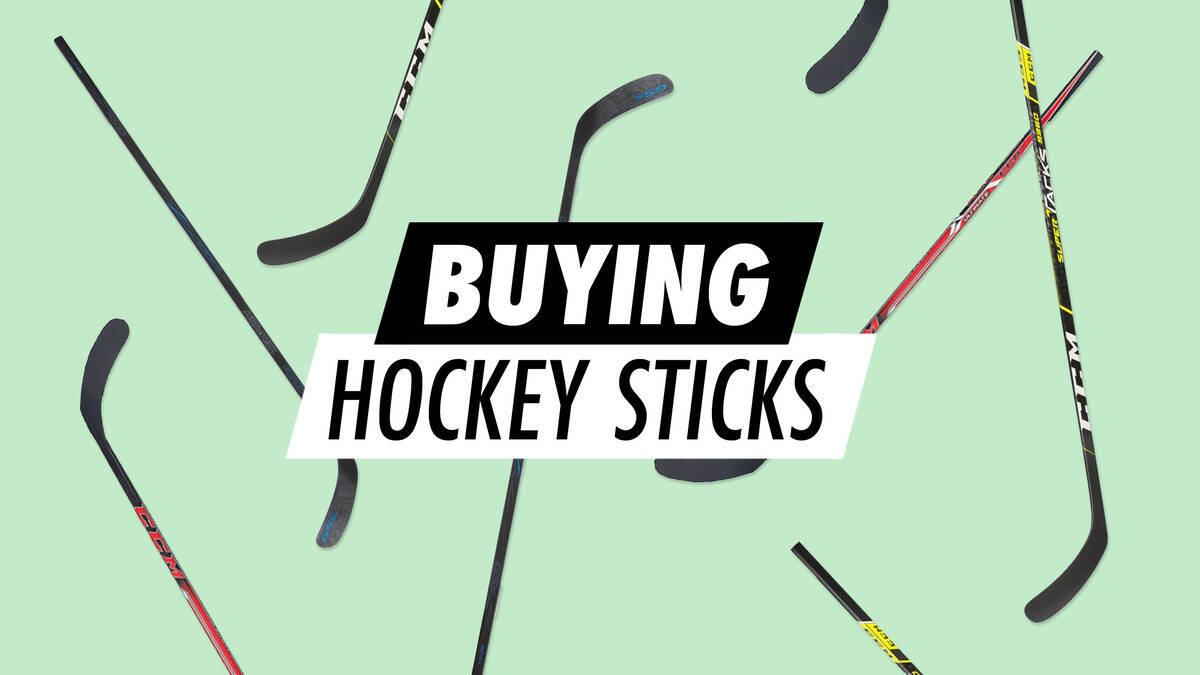
Selecting a new hockey stick involves aligning it with your skill level, height, and playing style. Consider the size, flex, and the type of surface you’ll be playing on.
With numerous options at your disposal, choosing the finest hockey stick to meet your requirements can appear daunting. Whether you’re into roller hockey or ice hockey, having the correct stick is vital for performance. Below is a list of essential factors to assist you in choosing the ideal hockey stick tailored to your style, proficiency, and playing conditions.
- Surface Type: Select the stick based on where you’re playing—ice, roller, or street.
- Material: Opt for a stick crafted from durable yet lightweight material.
- Length: Determine the stick’s length according to your height and playing approach.
- Flex: Choose a flex suitable for your strength and your preferred shot style.
- Handedness: Decide on left or right based on your grip technique.
Read further for comprehensive information on these elements!
Overview
Varieties of Hockey Sticks: Ice, Roller, and Street
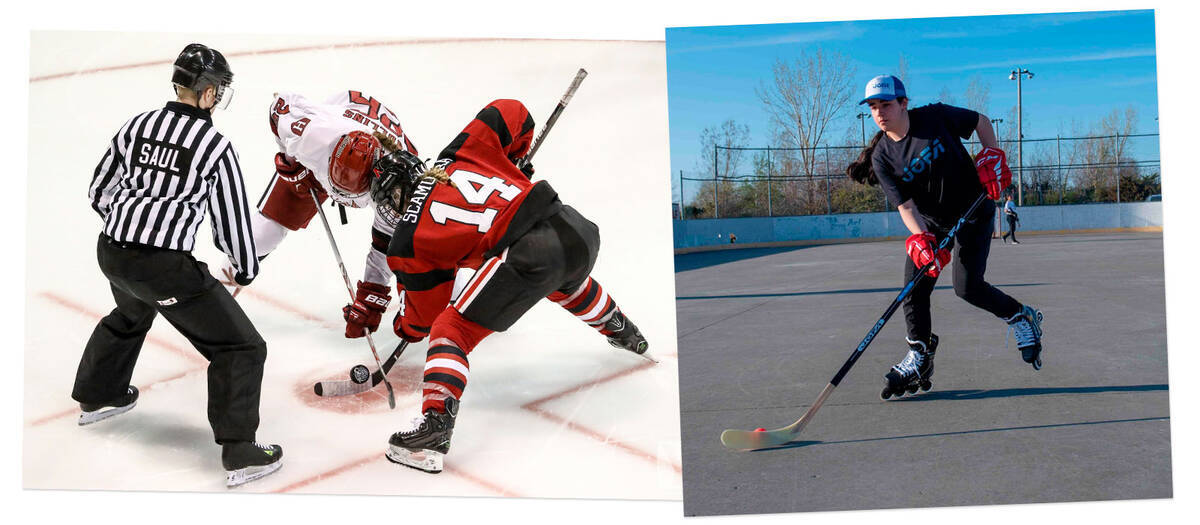
One of the primary considerations is whether you’ll be utilising the stick for ice hockey, roller hockey, or street hockey. The choice of stick is heavily influenced by the surface you play on, as well as your playing style.
- Ice hockey sticks: Constructed for use on ice surfaces
- Roller hockey sticks: Tailored for roller hockey surfaces such as smooth asphalt or sports court tiles.
- Street hockey sticks: Designed for hard outdoor surfaces like asphalt, street hockey sticks are typically composed of resilient materials to withstand wear and tear.
- Multi-purpose hockey sticks: Many hockey sticks are versatile enough for both street and indoor hockey, allowing you to purchase just one stick for both environments.
When evaluating a product description for a hockey stick, ensure it specifies the type of hockey or surface it is designed for.
Is It Advisable to Use Ice Hockey Sticks for Roller Hockey?
It’s generally not advisable to use an ice hockey-specific stick for roller hockey due to the increased wear of the hockey stick blade on rougher surfaces. It’s strongly suggested to use the stick for the intended purpose specified by the manufacturer to prolong its usability.
What Materials Are Hockey Sticks Made From?

Hockey sticks are comprised of materials such as carbon fibre, fibreglass, Kevlar, and wood—with wood being the original material for hockey sticks. Nowadays, sticks crafted from composite materials, frequently combining fibreglass and carbon fibre, are commonplace.
The blade of a hockey stick isn’t necessarily composed of the same material as the shaft. The shaft should be durable yet lightweight, while the blade needs to be robust to handle intense impacts from pucks and balls.
Hockey stick shafts must balance high strength with lightness and flexibility to avoid breaking during vigorous play. Different composite materials are engineered for these qualities, though certain types of hardwood share these properties.
While the blades must absorb substantial impacts without adding excess weight, they can be made from carbon fibre, fibreglass, wood, or plastic. The choice of material and blade design significantly aids players in managing the puck and delivering precise shots.
Composite vs. Wood Hockey Sticks
- Wood hockey sticks: Classic and durable, wood sticks tend to be heavier but offer a traditional experience. They’re favoured in street or roller hockey due to their robustness.
- Composite hockey sticks: Made from materials like carbon fibre, Kevlar, or fibreglass, these sticks are lighter and provide more flexibility. They are usually preferred for ice hockey but can also suit roller hockey players seeking high performance. Although more costly, composite sticks yield better energy transmission and superior control.
When exploring our selection of roller and ice hockey sticks, you can filter options based on shaft and blade material.
Choosing an Appropriate Hockey Stick Length

Selecting the proper length of a hockey stick is crucial to enhance both control and shot power. Consider several factors such as height, skill level, playing style, and personal preference when deciding on length.
Short vs. Long Hockey Stick
Shorter sticks enable greater control and agility, while longer sticks cover a broader reach. Generally, players focused on offence favour shorter sticks, while defence players opt for longer sticks.
Determining the Correct Stick Length
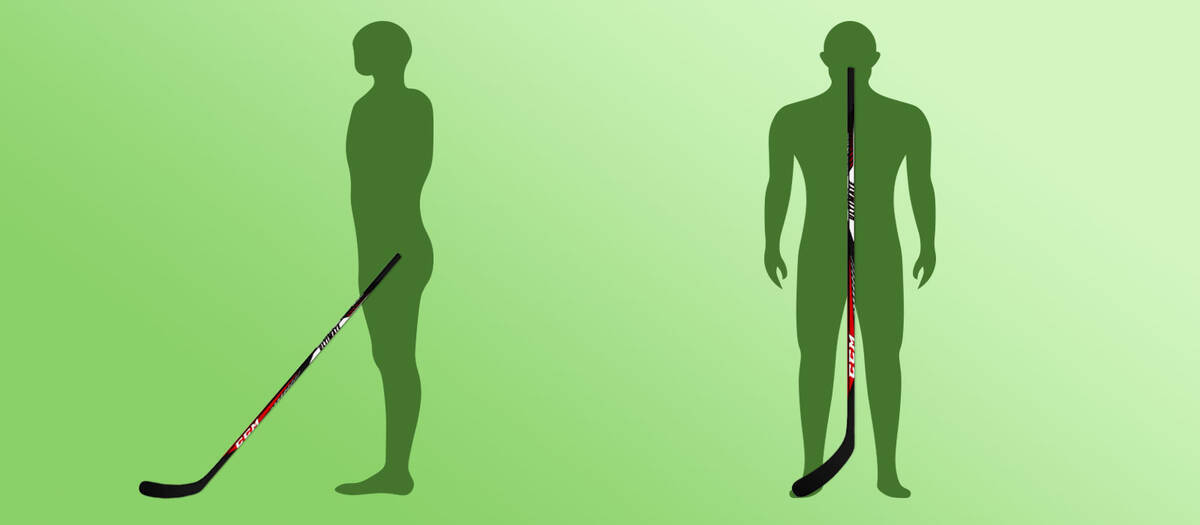
Stand with your arm by your side and, wearing skates, hold the stick's end. Slightly bend your arm, keeping it near your body. If the toe of the blade tilts slightly upwards, you've got the correct length.
Alternatively, you can either put on your skates or stand without them and position the stick vertically near your chin.
- With skates on: Stick end should not exceed your chin.
- Without skates: Stick end should not go beyond your nose tip.
Many players choose slightly longer sticks to cut down to their desired length, but note that modifications can void warranties.
Explore our filters to find hockey sticks according to length, and consider consulting our size guide if in doubt.
- Consult our hockey stick size guide
- Browse our ice hockey sticks range
- Browse our roller hockey sticks range
Understanding Hockey Stick Flex
Flex refers to the extent a hockey stick bends under pressure, for instance, while shooting. A higher flex number means a stiffer stick. Your choice of flex should align with your strength and preferred shot type.
- Lower flex: Enables more finesse and precision in shooting. Recommended for younger or inexperienced players due to ease of use.
- Higher flex: Facilitates powerful shots. Often chosen by seasoned players.
What Does the Curve of a Hockey Stick Blade Mean?
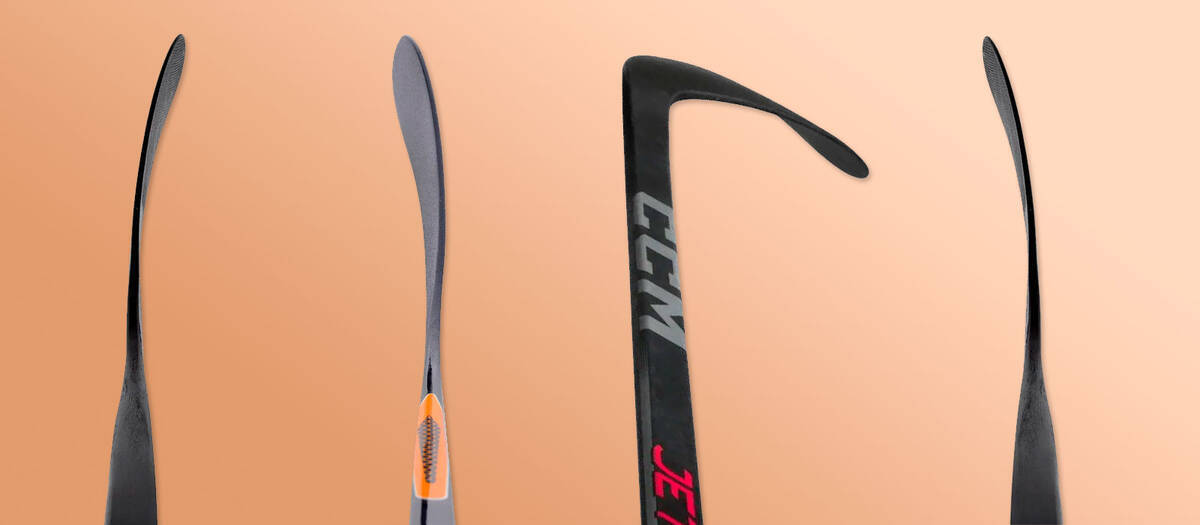
The blade curve is another vital component of a hockey stick, influencing how you manage the puck or ball in shooting, passing, and dribbling. Experimenting with different blade curves will help identify the most natural fit for your gameplay.
Creating a ‘pocket’ effect enhances puck control and encourages consistent, powerful shots.
Choosing Between Left-Handed or Right-Handed Hockey Sticks
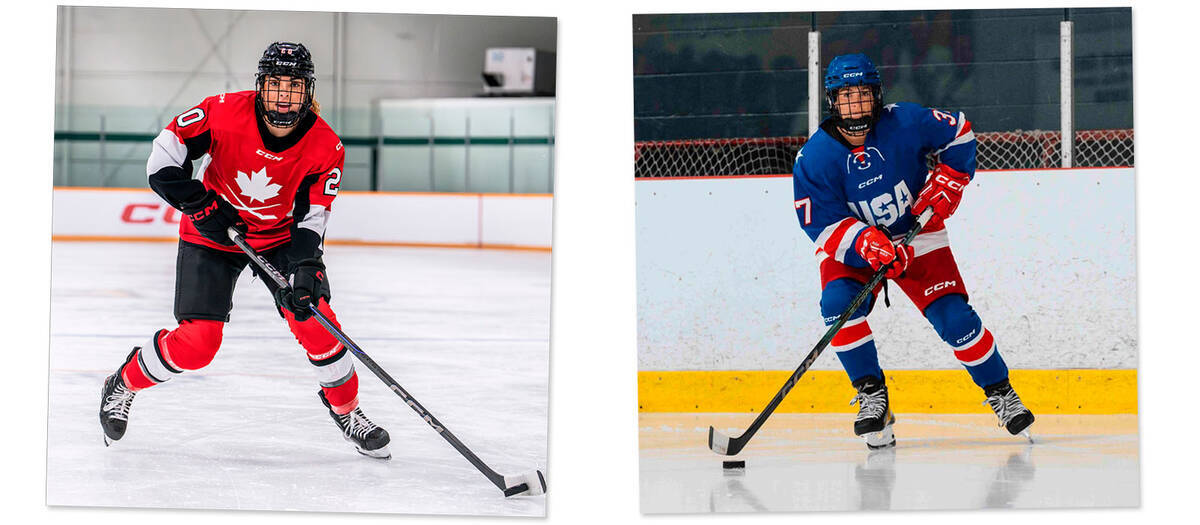
Selecting a left-handed or right-handed stick is dictated by which hand you place at the top to guide the stick. With your right hand on top, you should opt for a left-handed stick, and vice versa. Your shooting orientation has no relation to your natural hand dominance—it’s all about comfort.
If uncertain, hold the stick with both hands as if ready to shoot. Choose a...
- Left-handed stick: If puck is on your left and right hand is on top, with left hand near the blade.
- Right-handed stick: If puck is on the right and left hand is on top, with the right hand nearer to the blade.
In the video beneath, Nicklas clearly demonstrates how to determine if you play left or right-handed hockey.
Remember to explore our complete array for both roller and ice hockey. Discover all essentials for your hockey ventures:
